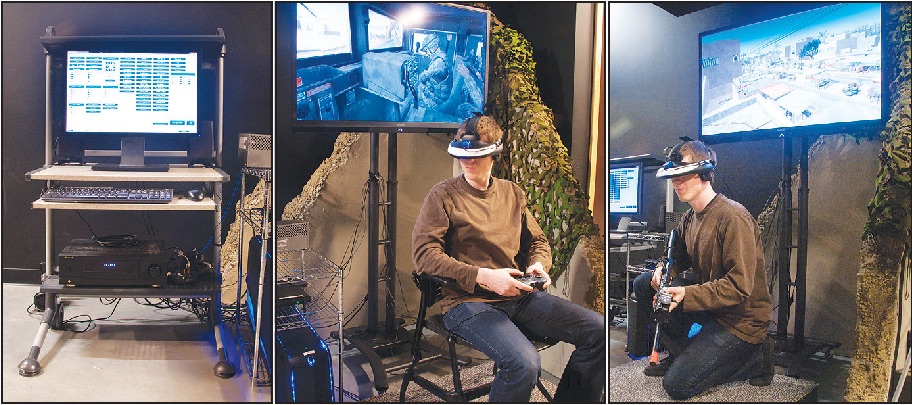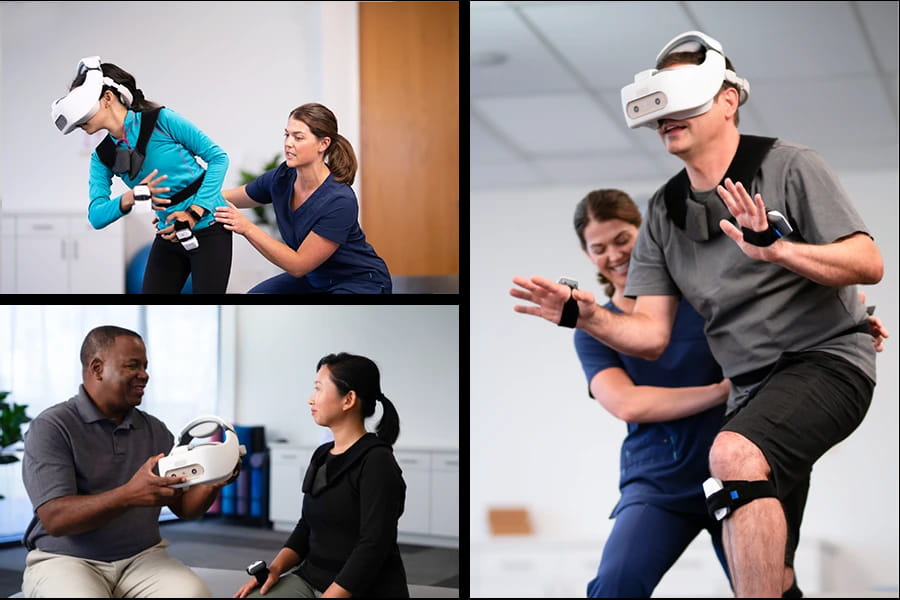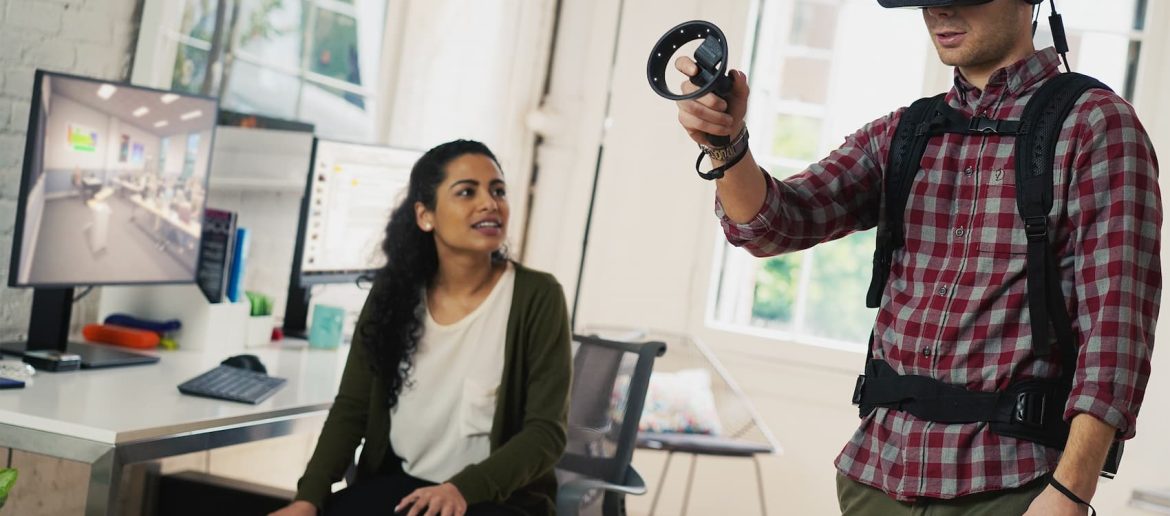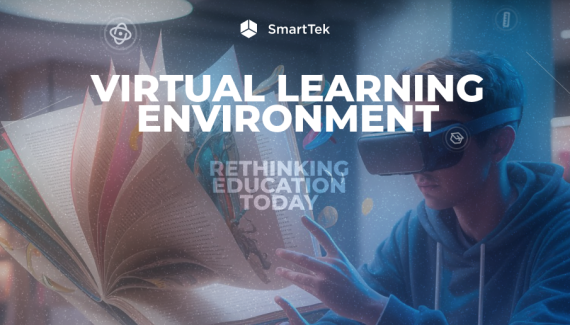With the rise of technology, the complexity and high cost of VR equipment, which can reach thousands of dollars, has limited the use of VR therapy in general practice. It was mostly used in research labs and clinics.
When affordable headsets hit the market, VR therapy became widely available. Moreover, researchers are now testing potential VR applicability in treating a wide range of disorders or even complete replacement for doctors in some cases.
What is VR Therapy and Why it is Efficient
In essence, VR therapy implements existing psychotherapeutic methodology, but in a more technological and comfortable version for the patient.
Working with imagination or real-life environments is crucial in psychotherapy, for example, immersing a patient in a specific place that provokes fear, anxiety, or panic. In the past, psychologists would ask their patients to imagine a particular situation or visit places where they had experienced problems. Now it has become possible to be in the right place without even leaving the office. It has become possible to simulate the desired environment by using VR technology.

VR therapy is an efficient technique because people automatically respond to alarm signals even if they understand perfectly well that they are in a virtual environment. That happens because the brain’s emotional command center, or limbic system, reacts to stressors in mere milliseconds, and that is much faster than logic is able to kick in.
As of today, scientists are testing VR therapy apps to help doctors solve multiple problems:
- Depression: dedicated apps help patients practice self-awareness.
- Bad habits: help in fighting alcohol and drug cravings.
- Eating disorders: help in changing self-consciousness and body perception.
- Medical procedures: help in distracting from painful treatments.
- Physically disabled people: VR therapy helps in spatial orientation and motor movement training.
Want to build an AR/VR application?
We are ready to be your trusted technology partner with proven expertise in immersive technologies.
Let’s talkWhen psychologists apply such therapy, patients can virtually develop and test their ability to cope with a frightening situation or learn to endure it less emotionally. Besides, unlike what commonly happens in the real world, patients can stop their exposure to the anxiety factor at any time.
VR therapy is an immersive treatment method similar to a modern video game with an engaging effect. Besides VR headsets, therapists can apply dedicated sensors to track users’ motion and eye movements, tactile gloves, and smell simulation devices.
Virtual reality therapy has a reported success rate of between 66% and 90% for people with PTSD when used to augment cognitive behavioral therapy (CBT).
— JMIR Serious Games
In What Cases Can VR Therapy Help?
Overall, virtual reality can potentially revolutionize therapy by providing innovative and efficient ways to treat a variety of mental disorders and physiological diseases. However, you should not consider using this technology instead of visiting a doctor. It is just a tool that helps doctors in their work.
Here are some ways VR can be used in mental health and physical therapy.
VR Exposure Therapy To Overcome Phobias
Using virtual reality, psychologists can create settings that cause fear or anxiety in people and allow them to gradually confront and overcome them in a controlled and safe environment.
Some anxious patients with phobias react to safe situations inadequately and perceive them as horrid. When such patients recognize their feelings and thoughts, they can repeatedly train them in these dreadful situations until the fear and anxiety gradually dissipate.
Stress and Anxiety Reduction
Therapists can pre-create calm and relaxing virtual environments and recommend them to patients for meditation to reduce stress and anxiety. When dedicated experiments were conducted, people with high anxiety manifestations noted that using a VR environment allowed them to relieve tension and reduce anxiety.
Rehabilitation after a Stroke
Virtual reality therapy can help stroke patients regain their motor function and cognitive abilities. The effect is achieved by using applications designed to simulate real-life objects and events.
Virtual reality and interactive games have advantages over traditional physiotherapy methods. They allow people to practice daily activities, which is almost impossible to achieve in an inpatient setting.

Let’s talk about your AR/VR project
Drop us your idea to know how the SmartTek developers team can help you with its tech implementation.
Contact usSocial Skill Development for Autistic People
One can simulate a variety of social situations in virtual reality. Using these simulations individuals with autism can gradually develop their social skills in a safe and controlled environment. For example, they can practice communication skills, learn cooperative activities, and recognize emotions in a virtual simulation.
Drug & Alcohol Addiction Treatment
Addicts can resort to virtual reality to simulate situations that trigger cravings for drugs or alcohol if they want to develop strategies to resist such cravings, urges, and triggers.
Distraction from Painful Sensations
Therapists can use virtual games during in-patient therapy sessions to distract patients from pain and make their treatment experience more tolerable. This approach can be especially helpful for people undergoing painful procedures or recovering from injuries.
Virtual reality has the potential to revolutionize therapy. It is currently providing innovative and efficient ways to treat various mental disorders and physiological diseases. Therefore, no one doubts that this technology has good prospects when applied in this field.
Let’s push the boundaries together! Connect with our experts and share your custom VR therapy software requirements.












